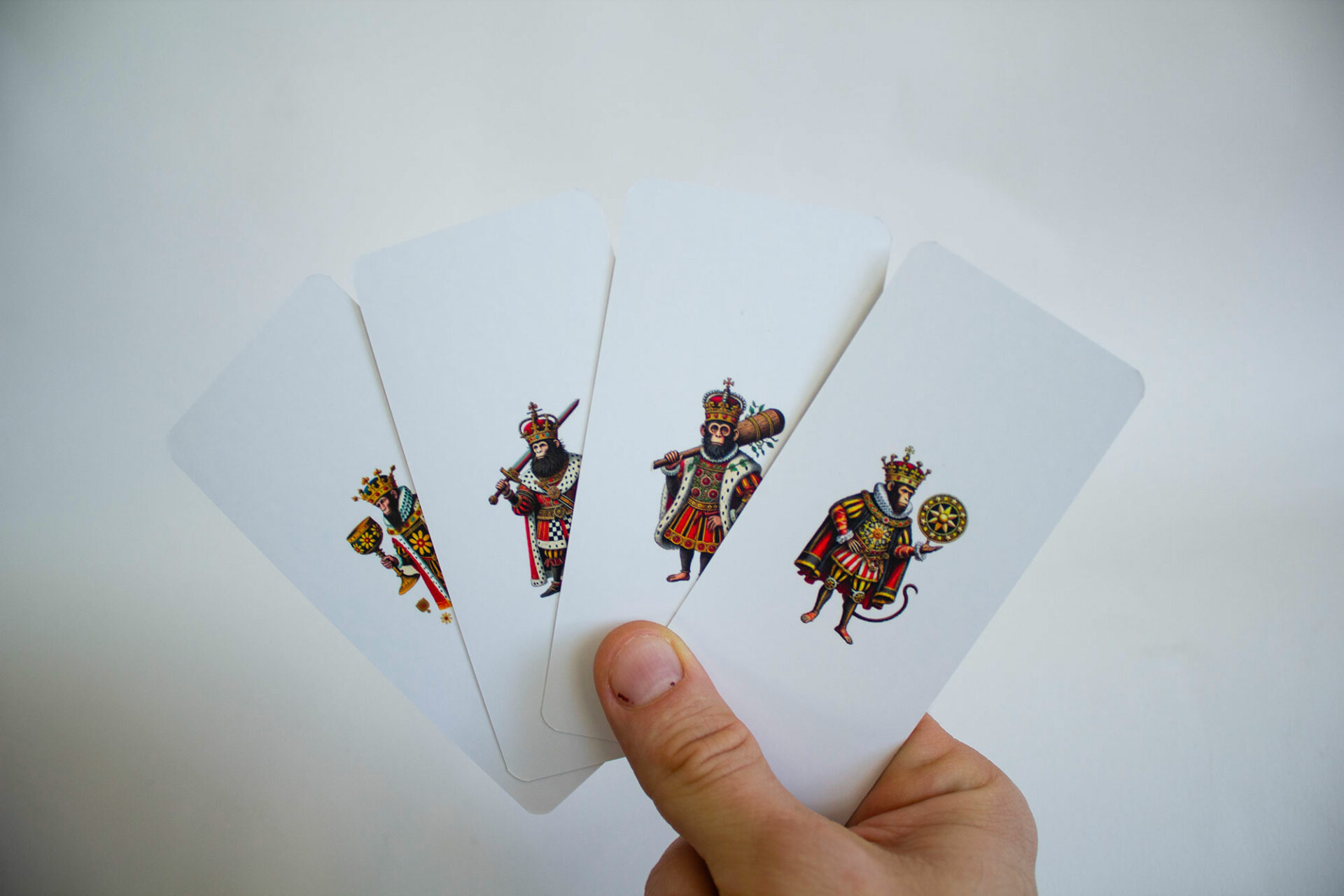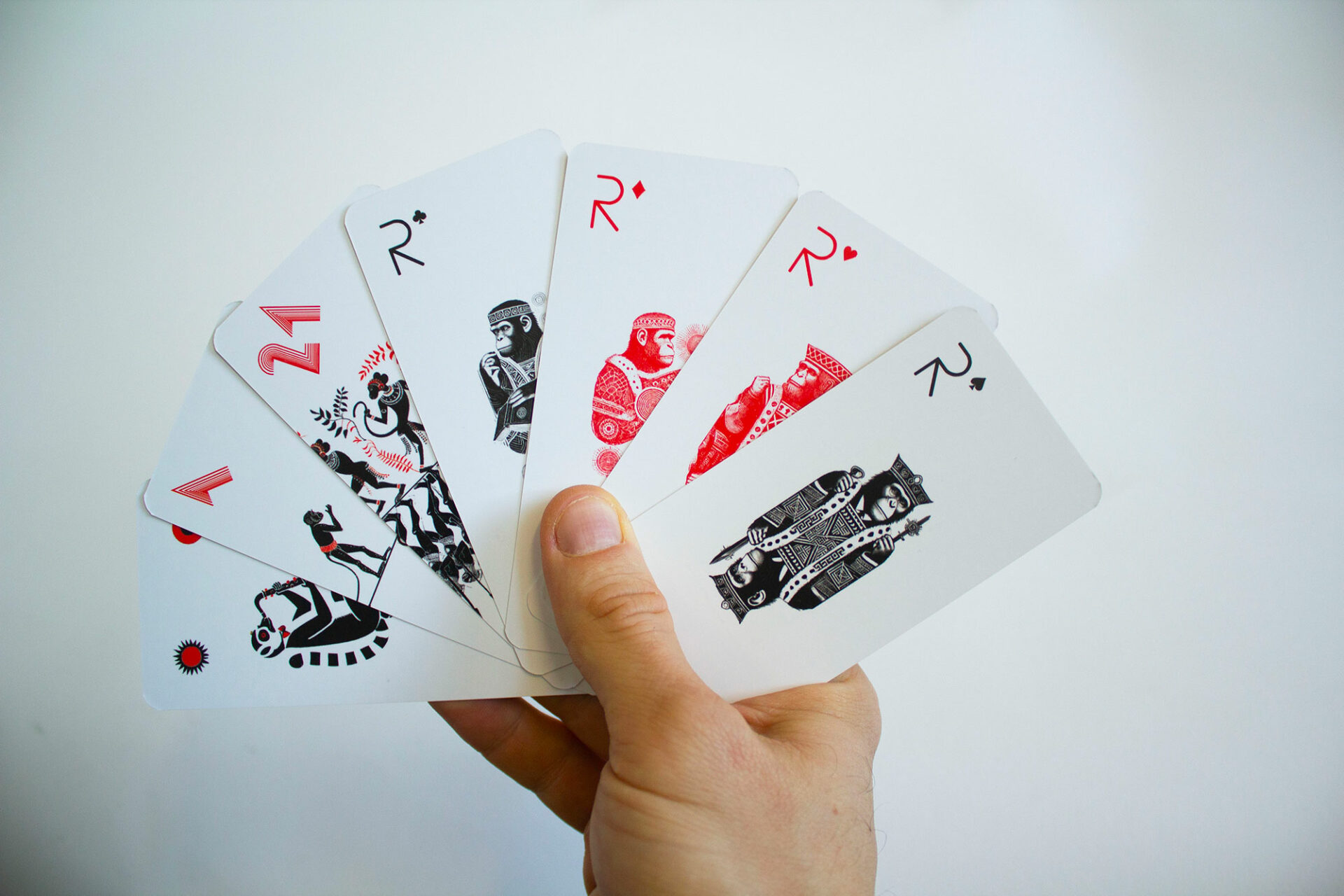The two card decks presented here—a French Tarot deck and an Italian deck of Neapolitan cards—stand out due to a unique choice: human figures are replaced by monkeys. This playful choice explores the idea that, despite our humanity, we remain great primates—players, sometimes mischievous—reminding us of the instincts and behaviors we share with our animal cousins.
Play is a way for children to understand the world. Through play, they learn to know their bodies, test their limits, and grasp the rules that govern their interactions with others and the objects around them. When play transitions from a solitary activity to something shared with others, it takes on a new function: socialization. Group play, whether it be sports, board games, or other forms of competition, raises questions about dynamics of alliance and opposition, the ability to cooperate, and the sense of justice and common rules.
Playing with others then becomes a collective pastime, an opportunity to spend time together. It serves as a pretext—sometimes taken seriously—for interacting and engaging with others. Whether it’s around a card game or on a sports field, human connections are made, and shared stories emerge. This playful confrontation can be challenging for those who lack self-confidence, but the game often acts as an interface: it allows tensions from direct confrontation to be shifted onto a third object—the game system itself.
Every type of game also offers a space for projection. In antiquity, it was already said that to maintain social peace, one must give the people bread and games. This idea hasn’t faded: even today, vast sums of money circulate around the world of sports, particularly during events like the Olympic Games. These large public spectacles serve as collective outlets where society’s pent-up aggression finds expression. Without them, perhaps passions would erupt on battlefields instead of football fields.
On a smaller scale, board games also provide a means to release relational tensions, but in a symbolic way. Two children battling with dice rather than fists are choosing a less violent but equally expressive form of competition. The game also acts as a social “lubricant”: around a table with a deck of cards and a glass of wine, conversations flow more freely, and relationships loosen up.
Games often possess a symbolic dimension. For instance, the pieces on a chessboard represent a power struggle between symbolic figures, which are evocative of real-life roles. The success of a video game largely depends on the player’s ability to project themselves into the game world, through captivating aesthetic and iconographic choices. The more coherent and immersive the virtual world, the more the player invests in it.
Playing cards, as we know them today (Spades, Hearts, Diamonds, Clubs), appeared in the early 16th century with the advent of the printing press. These suits are a simplification of older designs from Italy in the 14th century: Swords (nobility), Cups (clergy), Coins (merchants), and Clubs (peasants). Each deck of cards thus becomes a vessel for emotions and mental projections, providing a space for the unconscious to express itself.

